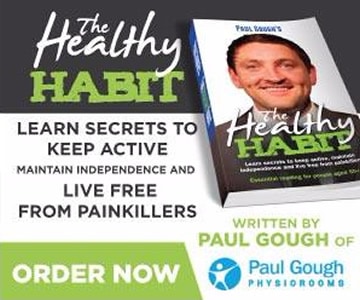Blog by our sports physio, Jo.
With everyone increasing their fitness to get that ‘summer body’ and enjoying the outdoors a bit more now the clocks have gone forward (thank god!!!)
I have witnessed a few side effects to this health kick..
Many people especially the runners have reported a ‘cramping’ symptom…
What is a muscle cramp I hear you say…
Well, a muscle cramp occurs when a muscle suddenly becomes forcibly and uncontrollably shortened and locked into a painful spasm.
A spasm occurs when a muscle, or even a few fibres of a muscle contract involuntarily (ie without you consciously willing it).
If the spasm is sustained, it becomes a cramp.
What causes muscle cramps:
- Inadequate hydration.
- Untrained muscles that are not supple and sufficiently conditioned for the exercise being undertaken (muscle cramps are much more likely to occur in muscles that are unused to vigorous training).
- Not having rest and recovery; we know that muscles are much more likely to cramp when fatigued.
And What can you do to reduce this?
Hydrate, but not too much! Yes it’s great to drink water but too much water is bad for you..
You are recommended to drink …. Men: 3 litres and women 2.2 litres.
What other things can help reduce cramping:
Dietary basics
Part of this nutritional strategy involves getting the dietary basics right.
Consuming fluids both during and after training is of course vital!
Also a high-carbohydrate diet containing plenty of carbohydraterich foods such as breads, cereals, rice, corn, pasta, potatoes, beans peas and lentil, and starchy fruits and vegetables such as yams, sweet potatoes, bananas, pears, etc.
This type of unprocessed diet will contain plenty of potassium and because many foods such as cereals, breads, cheese and other foods such as canned beans, tuna, sauces, pickles etc contain added salt (sodium), maintaining adequate sodium intake shouldn’t be a problem either.
Using sports drinks
Dietary basics are essential, but depending on your sporting activity and environment, maintaining optimum hydration, electrolyte balance and muscle glycogen levels may require assistance in the form of purpose designed sports drinks.
Calcium and magnesium research
When it comes to controlling muscle contraction and relaxation, calcium and magnesium are two important minerals, working synergistically to maintain normal electrical potentials and to coordinate muscle contractionrelaxation responses in the muscles.
In muscle cells, an increased calcium concentration triggers contraction of the muscle fibres while increased intracellular magnesium concentration counteracts this effect, resulting in relaxation.
Because of their function in muscles, much research has been focused on the role of calcium/magnesium in muscle cramps.
Stretching
One thing that nearly everybody agrees upon is that a regular stretching program targeted at muscles prone to cramping can greatly reduce the incidence of exercise associated muscle cramps as well as stopping cramp once it’s started.
Passive stretches heldfor 15-30 seconds at time seem to be effective; a regular program of stretching is known to lengthen muscle fibres, favourably altering spinal neural reflex activity.
Regular massage may also be beneficial as it promotes general muscle relaxation and helps accelerate the disposal of exercise metabolites from muscles cells.
Summary of main points
So what’s the best overall plan for avoiding cramps?
Well, there’s no easy answer to that question, but by following the recommendations below, you can certainly minimise your cramp risk:
- Build training intensity gradually. Remember, unaccustomed fatigue plays a major role in muscle cramps;
- Stretch regularly and particularly those muscles used in your more strenuous training sessions; Consume a high-carbohydrate diet, drink plenty of fluid and ensure you consume plenty of calcium and magnesium-rich foods;
- Use carbohydrate-electrolyte drinks during longer training sessions and/or during recovery;
If you’re a long-term sufferer of cramps, consider trying magnesium supplementation;
Try massage therapy as additional method of relaxing muscles, particularly after tough workouts.
How can you treat cramping yourself?
– Include these nutritional substances in your diet.
– Foam roller, stretching, self massage.
– Or take advantage of our bronze, silver or gold massage package (limited numbers left now, ask inside or call us to find out more 😉
And if you would like to know more about muscle cramps please don’t hesitate to ask me,
Bye for now,
Jo x
Sports Therapist
If you would like to know more about our the type of massage we do here at Paul Gough’s simply press here: http://www.paulgoughphysio.com/massage
(photograph of myself included ;-))
And…if you’d like to read some more blogs written by myself just press here: http://www.paulgoughphysio.com/blog/prescription-foot-orthotics-real-truth-high-heels/

